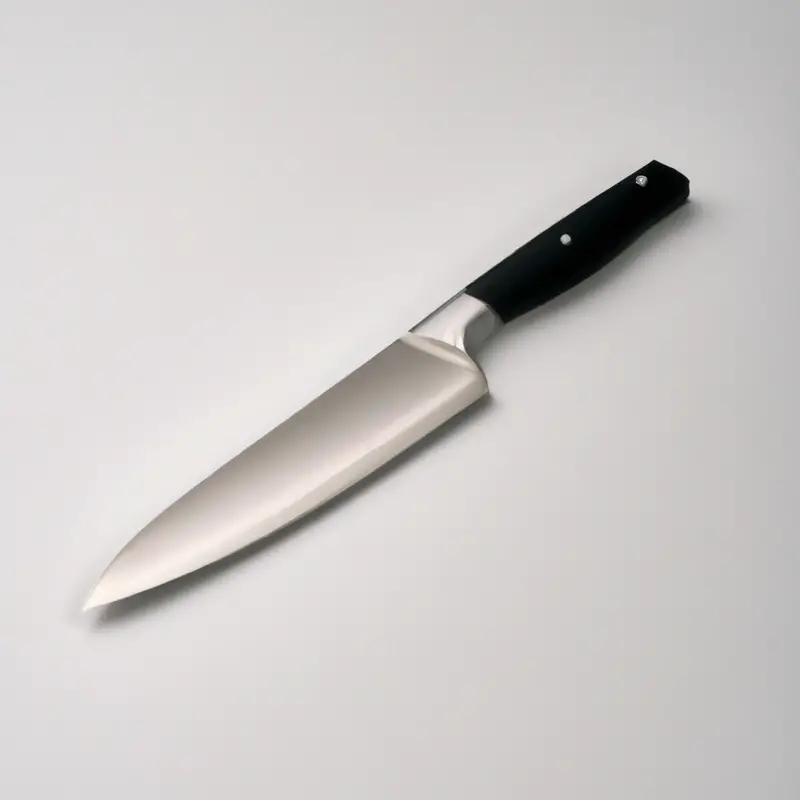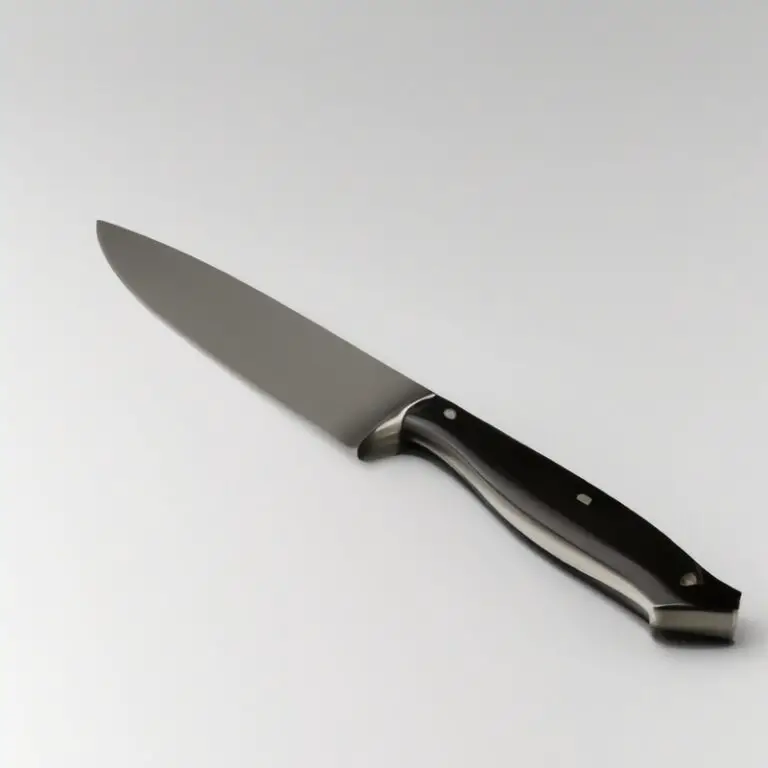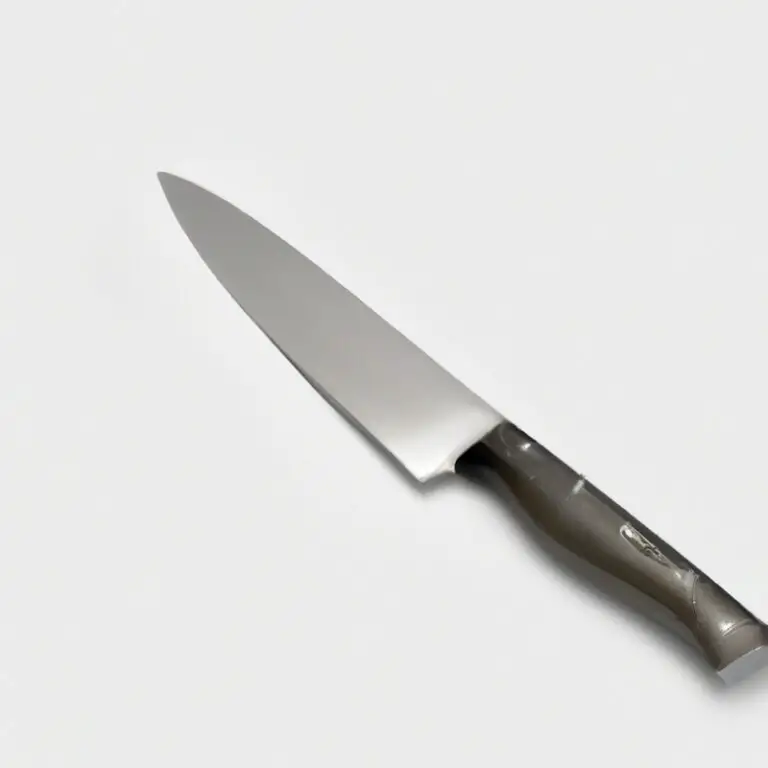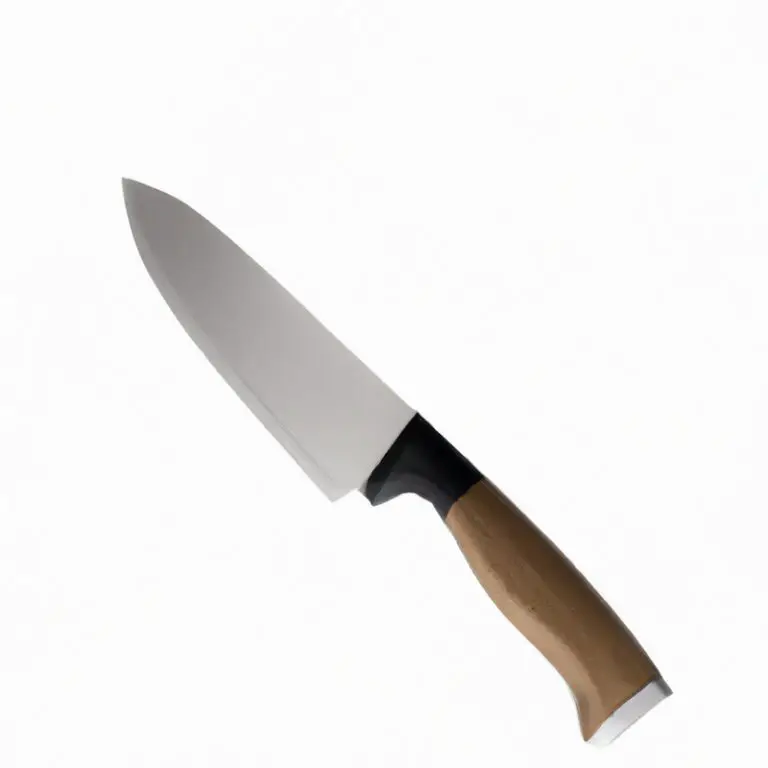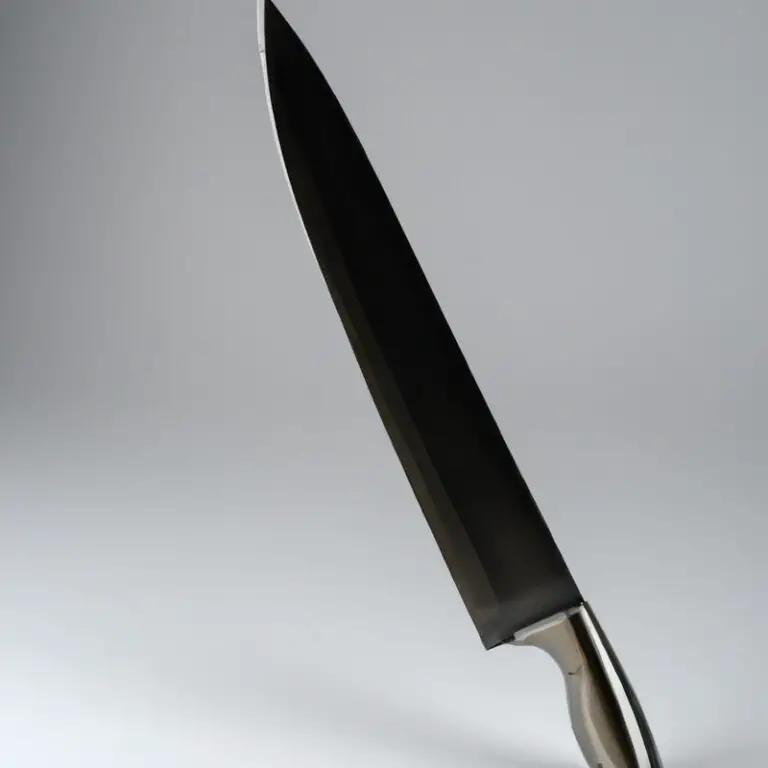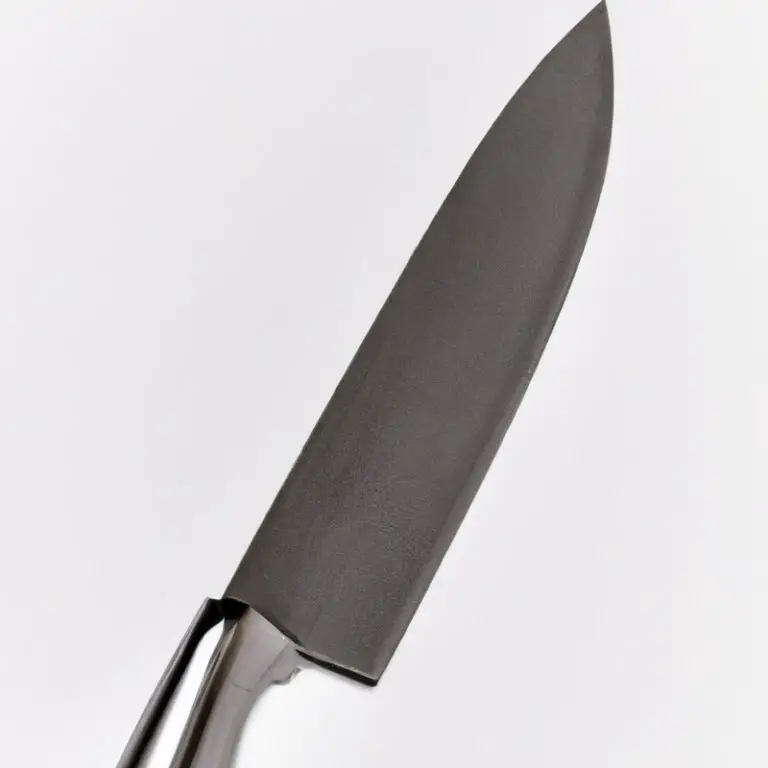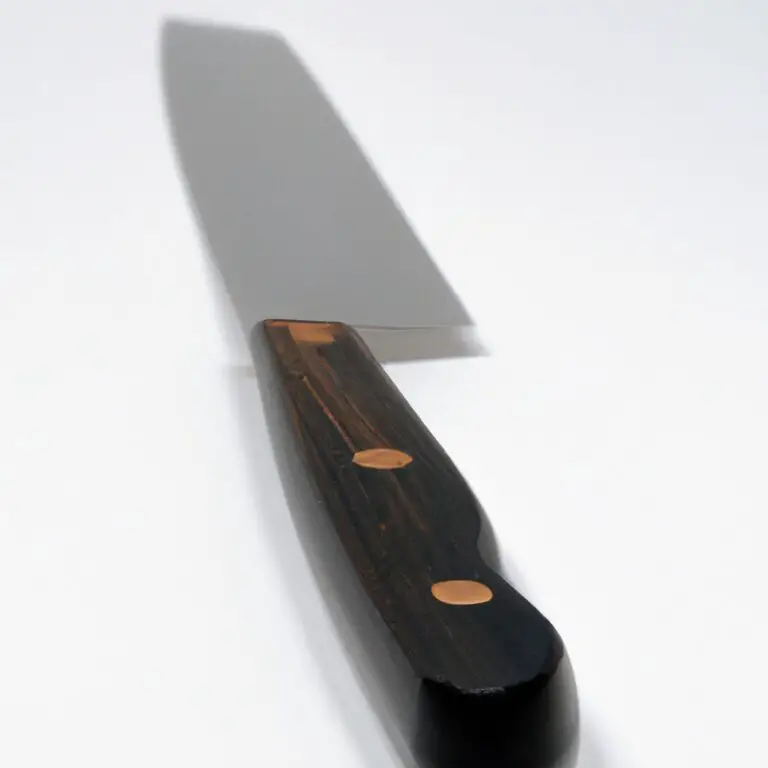What Is The Best Angle For Sharpening a Chef Knife?
Key Takeaways:
- The ideal angle for sharpening a chef knife depends on the type and material of the blade.
- A precise and consistent angle between 15-20 degrees is recommended for most chef knives.
- It is crucial to use high-quality sharpening tools and proper technique to maintain your knife’s sharpness and longevity.
- Regular sharpening and honing can greatly improve the performance and safety of your chef knife in the kitchen.
As a chef, there’s nothing more frustrating than using a dull knife. But what’s the best angle for sharpening a chef knife?
The answer may surprise you.
In this article, we’ll shed light on the anatomy of a chef knife and how different angles impact its sharpness. We’ll also cover methods for finding your knife’s original sharpening angle, the pros and cons of different angles, and which angle suits your needs.
We’ll also provide a step-by-step guide on how to achieve a razor-sharp edge, and tips on maintaining your knife’s edge.
If you want to elevate your cooking game, keep reading.
| Angle(degrees) | Sharpness | Durability |
|---|---|---|
| 15 | Extremely sharp | Low durability |
| 20 | Very sharp | Moderate durability |
| 25 | Sharp | High durability |
| 30 | Less sharp | Very high durability |
Understanding the Anatomy of a Chef Knife: What You Need to Know Before Sharpening
Before sharpening your chef knife, it’s essential to understand its anatomy. A typical chef knife consists of a blade, tang, bolster, and handle.
The blade is the main cutting component, while the tang is the unsharpened portion of the blade that extends into the handle.
The bolster is the thick section between the blade and the handle that provides balance and prevents your fingers from slipping onto the sharp edge. The handle is the grip that enables you to hold the knife comfortably and securely.
It’s important to know these parts so that you can sharpen your knife accurately and avoid damaging any of its components.
The Science of Sharpening: How Different Angles Impact Your Knife’s Sharpness
The angle at which you sharpen your chef knife plays a significant role in determining its sharpness. A lower angle, such as 15 degrees, will create a finer edge that is ideal for slicing tasks.
However, a lower angle can also make the knife more fragile and prone to damage.
In contrast, a higher-angle of 25 degrees or more will produce a more durable edge that can withstand more force, making it suitable for chopping and cutting through tougher ingredients. However, a higher angle may not be as sharp as a lower one.
Ultimately, the best angle for sharpening your chef knife will depend on your intended use and personal preference.
Understanding the science of sharpening angles is crucial in selecting the right angle for your needs.
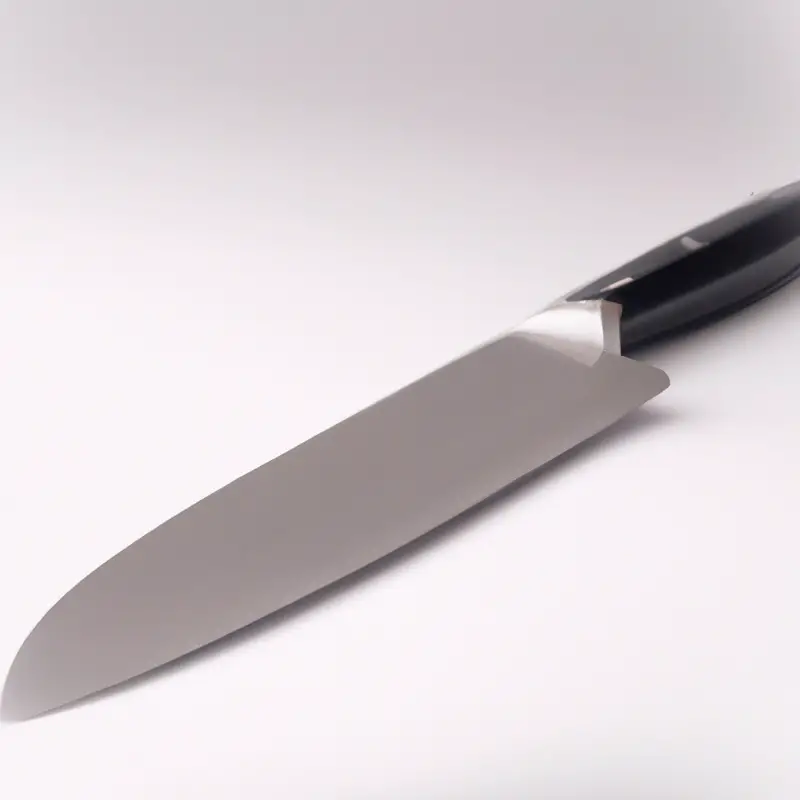
Finding Your Knife’s Original Sharpening Angle: Importance and Methods
Knowing the original sharpening angle of your chef knife is crucial as it helps you maintain and achieve the sharpness of your blade. A deviation from the original angle can result in uneven edges and may damage your knife.
To find the original angle, look for the manufacturer’s instructions or search online resources for your specific knife model.
Some knives may have a secondary bevel that can affect the sharpening angle, so it is important to take it into consideration. If you cannot find the original angle, you can use a sharpening angle guide or a sharpening angle calculator to estimate the proper angle.
The guides may come in different shapes and sizes, but most of them are easy to use and can help you achieve a consistent angle.
Overall, finding your knife’s original sharpening angle ensures that you are sharpening your knife correctly and preventing damage to your blade.
The Pros and Cons of Different Sharpening Angles: Comparing 15 vs 20 vs 25 Degrees
Different sharpening angles can have varying impacts on the sharpness and durability of your knife’s edge. Here are the pros and cons of three popular angles for chef knives:
- degree angle: This is the sharpest angle and can create an incredibly sharp edge perfect for delicate cutting tasks. However, the edge can be fragile and less durable, requiring frequent re-sharpening.
- degree angle: This angle is a great balance between sharpness and durability. It creates a strong and sharp edge that can handle most cutting tasks, but may require more effort to create compared to a 15-degree angle.
- degree angle: This angle creates a sturdy and durable edge that can handle heavy-duty cutting tasks. However, it may not be as sharp as a 15 or 20-degree angle, and may struggle with delicate cutting tasks.
Ultimately, the best angle for your chef knife depends on your personal needs and preferences. Consider the tasks you will be using your knife for and choose an angle that balances sharpness and durability accordingly.
The Best Sharpening Angle for a Chef Knife: How to Choose Based on Your Needs
The best sharpening angle for a chef knife depends on your needs and intended use. A lower angle, around 15 degrees, will provide a sharper edge, but may sacrifice durability and require more frequent sharpening.
A higher angle, around 25 degrees, will provide a more durable edge, but may be less sharp.
Consider the primary tasks you perform with your knife, such as slicing meats or chopping vegetables, and choose an angle that best suits those tasks. It’s also important to check the manufacturer’s recommended angle, as some knives are designed to be sharpened at specific angles.
Ultimately, the best sharpening angle for your chef knife is a personal preference and may require some experimentation to find the perfect balance between sharpness and durability.
Remember to use proper sharpening techniques and tools to achieve the best results.
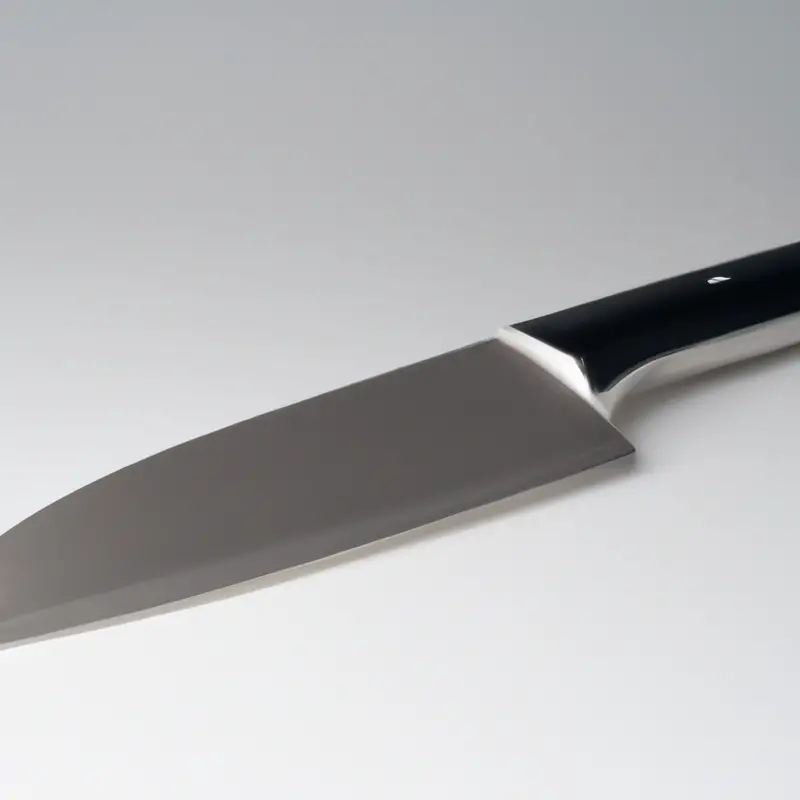
Achieving a Razor-Sharp Edge: Step-by-Step Guide to Sharpening Your Chef Knife
To achieve a razor-sharp edge on your chef knife, follow these simple steps:
- Start by honing your knife: Use a honing rod to realign the blade before sharpening. This step will make the sharpening process more effective.
- Select your sharpening tool: Choose between sharpening stones, electric sharpeners, or handheld sharpeners based on your preference and experience level.
- Choose the appropriate grit: Select a coarse grit for repairing damaged edges, a medium grit for regular sharpening, and a fine grit for honing.
- Angle your blade: Determine the appropriate angle for your knife based on its original sharpening angle. Begin with a higher angle and gradually lower it until you find the sweet spot.
- Start sharpening: Use smooth, back-and-forth strokes to sharpen the blade, making sure to cover the entire edge.
- Polish the edge: Finish with a few passes on a fine grit stone or a leather strop to polish the edge to a razor-sharp finish.
With these simple steps, you can sharpen your chef knife like a professional and enjoy precision cutting every time.
Honing vs Sharpening: Understanding the Difference and How to Use Both
When it comes to maintaining your chef knife’s edge, honing and sharpening are two essential processes to know. Honing uses a honing steel to straighten the blade’s edge and remove any burrs or misalignments that may have occurred during use, while sharpening involves removing a small amount of metal from the blade to create a new, sharper edge.
While honing can help maintain a sharp edge, sharpening is necessary to restore a dull blade.
It’s important to note that overuse of honing without proper sharpening can actually cause your blade to dull more quickly. To use both methods effectively, it’s recommended to hone your knife regularly, but sharpen it only as needed (usually once or twice a year depending on usage).
Use a honing steel before and after each use to maintain the blade’s edge, and sharpen it with a sharpening stone or electric sharpener when it becomes dull.
Remember, mastering both honing and sharpening techniques is essential for keeping your chef knife in top condition and ensuring optimal performance in the kitchen.
Selecting the Right Sharpening Tools: Stones, Rods, and Sharpeners
Selecting the right sharpening tools is crucial to achieving a sharp and durable edge on your chef knife. There are three main options to choose from: sharpening stones, honing rods, and electric sharpeners.
Sharpening stones are the most traditional and affordable option.
They require some practice to use correctly, but they are the most versatile and allow you to control the angle and pressure of the sharpening. Diamond, ceramic, and natural stones are different materials you can pick from, each with their own pros and cons.
Honing rods are often used as a complement to sharpening stones.
They don’t remove much material from the blade, but they are great for maintaining the edge and aligning any burrs. Manual and electric honing rods are available.
Electric sharpeners are quick and easy to use, but they can be expensive and remove more metal from the blade than other methods.
They also give less control over the angles and pressure, which can damage the blade if used incorrectly. When selecting the right sharpening tool, consider your budget, skill level, and frequency of sharpening.
A sharpening stone is a good investment for anyone who wants to develop their sharpening skills and has time to dedicate to the task.
A honing rod is a great option for regular maintenance. Electric sharpeners are ideal for busy commercial kitchens.
Maintaining Your Knife’s Edge: Tips for Regular Sharpening and Care
Maintaining your knife’s edge is crucial to ensure optimal performance and longevity. Here are some tips for regular sharpening and care:
- Clean your knife after each use with warm water and soap, and dry it thoroughly to prevent corrosion.
- Use a honing steel regularly to straighten the edge and maintain sharpness.
- Sharpen your knife with a sharpening stone or tool of your choice. Follow the manufacturer’s instructions carefully and maintain the correct angle while sharpening.
- If your knife is dull, don’t force it. Sharpen it immediately to prevent damage.
- Don’t use glass or granite cutting boards, as they can dull your knife quickly. Opt for wood or plastic instead.
- Store your knife in a safe and dry place to prevent rust and damage.
By following these simple tips, you can ensure your knife stays sharp and performs at its best for years to come.
Troubleshooting Sharpening Problems: How to Fix Uneven or Dull Edges
Uneven or dull edges can be frustrating to deal with while using your chef knife in your kitchen. However, there are some troubleshooting tips to help you fix this problem with your knife’s sharpness.
First, inspect your knife’s edge with a magnifying glass to identify any irregularities and where the knife has lost its sharpness.
Uneven sharpening may have caused these irregularities, leading to the dull edge. Next, identify the type of blade material and choose the appropriate sharpening tool, such as water stones, diamond stones or honing rods to attain the desired sharpness.
Then, follow the sharpening guide, ensuring that you maintain the correct angle throughout the sharpening process, to obtain an even edge.
If the unevenness persists, try using a lower grit stone or honing rod before working your way up to a higher grit to smooth out the edge. Finally, remember to use a stropping motion by dragging the edge of your knife along a sharpening steel to realign the edge and remove any remaining burrs.
Finding the root cause of both dullness and unevenness, selecting the right sharpening tools and maintaining the correct angle with proper technique can help you troubleshoot sharpening problems and achieve an even and sharp edge for your chef knife.
Final Verdict
Choosing the best angle for sharpening a chef knife is not a simple task. Understanding the anatomy of a knife and the science behind angles is necessary for achieving a razor-sharp edge.
With the pros and cons of different sharpening angles compared and a step-by-step guide for achieving a sharp edge, you are now equipped with the knowledge to make an informed decision.
Remember to maintain your knife regularly to keep it in excellent condition. By selecting the right sharpening tools and using them correctly, you can get the best use of your knife for years to come.
Keep honing and sharpening, and you will always be ready to ace your cooking game!

